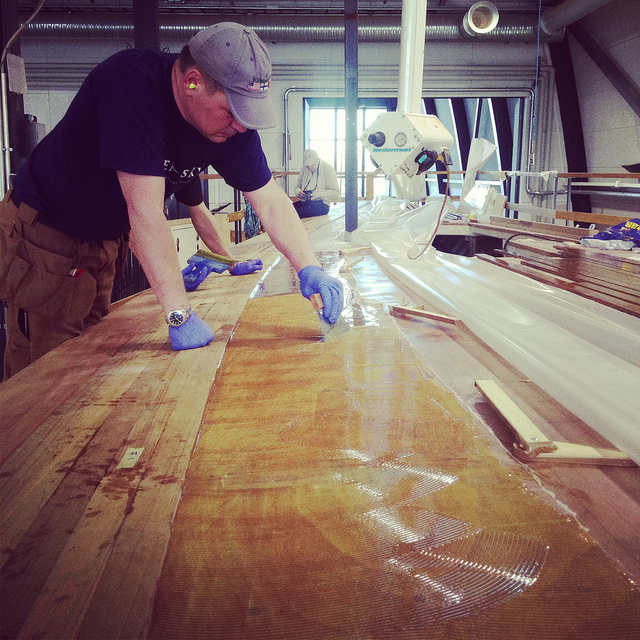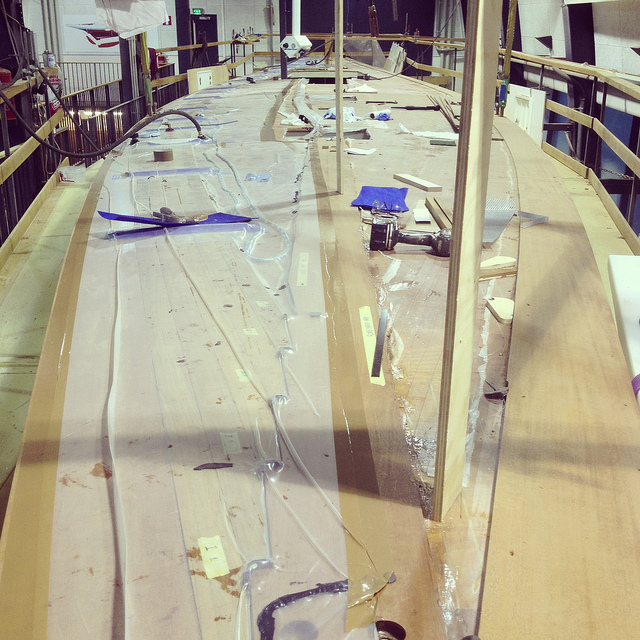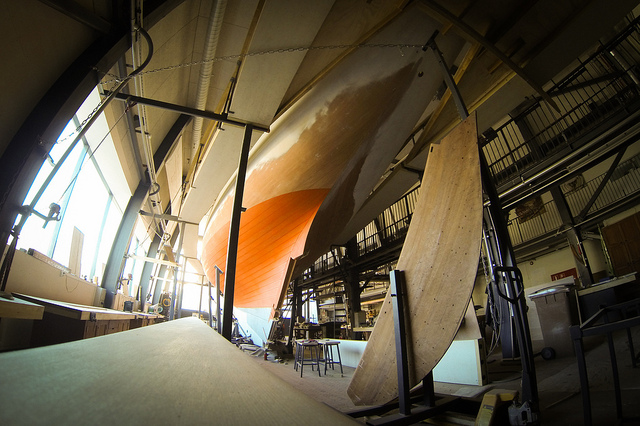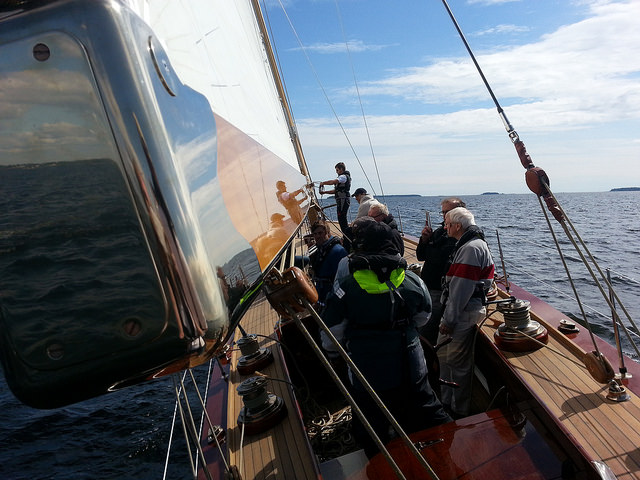Projects: Blue Marlin: where tradition meets “this new, glued thinking”
Until very recently, the Wooden Boat Centre in Kotka, Finland showcased the painstaking restoration of Blue Marlin – a classic 1930s Twelve Metre Class yacht. WEST SYSTEM epoxy has played a crucial role in giving her a brand new lease of life.
“When we first saw Blue Marlin, she had barely undergone any repair work in seventy years,” says Allan Savolainen, manager at boat builder Red Sky and master shipwright of the restoration. “She arrived in our yard on a cold November day in 2006, in a seriously decayed condition.”

In her heyday, Blue Marlin was one of the finest yachts in her class. Designed and built by esteemed British boat builder Camper & Nicholsons (C&N) in 1937, she started life with the name Alanna and was one of five C&N racing Twelves built for sailing in England’s Solent. Early on in her life, Alanna was owned by celebrated English aviation pioneer and keen yachtsman Sir Thomas Sopwith – and it was Sopwith that renamed her Blue Marlin. After changing hands several times, Blue Marlin passed to an Italian family in 1951, who kept hold of her until 2006, when classic yacht enthusiast Henrik Andersin heard of her moored in Slovenia.
“Henrik and I had travelled to see another boat, but the repairs weren’t faithful to the original design,” says Allan. “When we learned about Blue Marlin sitting in near-original condition in Izola, Slovenia, Henrik knew that was exactly what he wanted. He didn’t even go to view her!”
Planning a faithful restoration
Henrik worked with Red Sky and its partners to plan the scope of the work. The Red Sky crew have an excellent reputation for wooden yacht restoration in Finland and have worked with Henrik on a number of projects.

However, this project was set to be more challenging than any they’d taken on to date. “It was never going to be a restoration where you take a worn-out part of the boat and just replace it with something new,” explains Allan. “To restore Blue Marlin faithfully would take time.”
And take time it did. To start with, Henrik had to oversee construction of the new Wooden Boat Centre in order to cater for the sheer size of Blue Marlin – at 12 metres, the Blue Marlin was the largest yacht Red Sky had ever restored. Moreover, the project team dedicated years to the planning process, sourcing the finest traditional materials and developing bespoke restoration techniques. “Our aim was not only to restore this yacht, but to protect her for many years to come,” Allan confirms.

One critical factor in the restoration was the use of epoxy. Allan is huge fan of WEST SYSTEM® G/flex 655 epoxy. He has even built a vertically hung, twin 1:1 syringe pump to save time dispensing it. However, epoxy was only used where it would strengthen the boat and protect it from early decay. “The shape and the aesthetics of Blue Marlin were restored traditionally, but it was vital we made enhancements for strength, safety and longevity. So we used a mix of old techniques and this new, glued thinking.”
Epoxy: adding substance to 1930s style
The stem of Blue Marlin, for example, was originally made using two sawn solid pieces of wood. But in the restoration, layers of thin mahogany planks were glued together with epoxy to deliver much greater strength. The scarph joint, however, is bedded with traditional white lead, while the wood keel was installed as a single piece of uncoated green timber in line with 1930s boatbuilding methods.
When it came to the rudder post, the traditional approach had let the boat down. “The place where the rudder stock goes through the timbers suffers the most in old sailboats,” explains Allan. “The giant hole through the structure allows water to travel everywhere inside. We wanted to eliminate that joint, which meant gluing the pieces and shaping them as a single assembly.”

The planking above the waterline is also edge glued with epoxy – but beneath it, it’s caulk seamed the traditional way. “In Finland, we winterise the boats on the hard,” explains Allan. “The planking below the waterline tends to dry out before picking up water again in summer, so it needs to stay flexible. But above the waterline, we want the planks to stay rigid so the renewed ‘Endeavour Blue’ paint – the same colour Sopwith chose for the 1938 racing season – remains fair.”
The Red Sky craftsmen also installed a new plywood sub-deck for greater robustness and water tightness. This was covered with fibreglass cloth set in epoxy, before individual, sprung teak planks were glued with epoxy on top. Matching sprung planks with v-grooves were also glued to the underside of the plywood to recreate the look of a traditional, single-planked deck.
A gleaming future
Some seven years after she first arrived at Red Sky, decayed and tired, a glossy and gleaming Blue Marlin rode the waves again in 2014. Her racing debut was at the 2015 Kiel Regatta in Germany – and she won the very first race she entered. “That was a great result!” smiles Allan. “She’s entered other races since and has placed in the middle of the fleet. But this is just the first season. Once the crew has really bedded in together and discovered what she can do, her performance should only get better.” Thanks to judicial use of WEST SYSTEM epoxy, Blue Marlin will undoubtedly be showing off her capabilities with strength and style for many years to come.

You can see detailed photos of the full Blue Marlin restoration on flickr. Red Sky also has the story of Blue Marlin’s restoration on its website.
Visit the West System International website to discover more about the full range of WEST SYSTEM epoxy products and how they can help to build stronger, more enduring boats.
